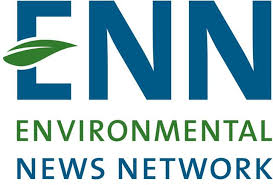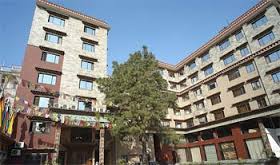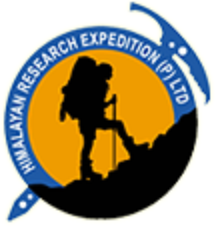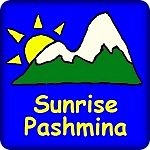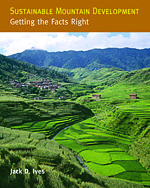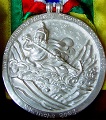 |
The Sir Edmund Hillary Mountain Legacy Medal |
 |
Presentation of 2017 SEHMLM
Additional photos of SEHMLM presentation at Hotel Tibet International
2017 Sir Edmund Hillary Mountain Legacy Medal Winner:
Ing. César A. Portocarrero Rodríguez
Medal Presented on December 11, 2016, in Kathmandu
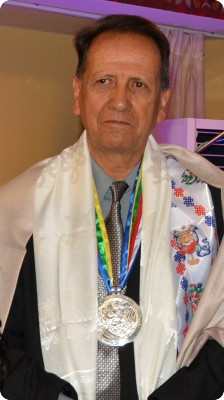
On May 31, 2016, Nepalese NGO Mountain Legacy announced the selection of Peruvian engineer César Augusto Portocarrero Rodríguez to receive the Sir Edmund Hillary Mountain Legacy Medal. The award was presented in Kathmandu on December 11, International Mountain Day. César Portocarrero has directed projects to mitigate the danger of outburst floods from numerous glacial lakes in the Andes, saving thousands of lives and many millions of dollars, and he is now sharing his expertise with members of the High Mountain Adaptation Partnership (HiMAP), including Nepal, Bhutan, and several Central Asian nations.
The Sir Edmund Hillary Mountain Legacy Medal is the world's most prestigious award for mountain advocacy. The Nepalese NGO Mountain Legacy was created in 2003 and authorized by Sir Edmund Hillary to administer the award, which is presented for remarkable service in the conservation of culture and nature in mountainous regions.The award is intended both to honor Sir Edmund's remarkable record of development assistance and also intended to encourage its emulation.
Commenting on the selection of Portocarrero, Mountain Legacy President Dr. Kumar P. Mainali (Dept. of Biology, University of Maryland) stressed the link between mountain recreation and development work.
On May 29 sixty-three years ago, Edmund Hillary and Tenzing Norgay climbed the final steps that carried Colonel John Hunt's 1953 British Everest Expedition to a successful conclusion. For Edmund Hillary, however, the conquest of the so-called Third Pole was not so important as the love he discovered for the mountains and the people of Nepal. Applying the same energy, imagination, loyalty, and enthusiasm for the outdoors that had made him a great explorer and adventurer, Hillary now undertook to help his friends improve their lives and safeguard the legacies of their mountain environment and culture. Hillary remained an enthusiastic advocate of adventure as a means of opening the individual's spirit to unexpected challenges and opportunities. In a time of rapidly escalating challenges, we all need such adventurers, and we are quite fortunate to have César Portocarrero on our side.
Mr. Portocarrero notes that he first read about the 1953 British Expedition as a child. It was a Reader's Digest story, and he was "completely impacted" by the stupendous efforts of the climbers.
I read how Mr. Tenzing used to train for the climbing carrying bag packs loaded with small rocks. When I went for the first time to the Khumbu valley on the road to the Everest base camp I was amazed at the huge effort involved in just reaching Lukla village when there was not yet an airport. Then there was still the long trek to Mount Everest. This effort, just to be there for the final challenge, this effort is what stuck in my head and what I have thought about for so many years when the project seemed just too tough, too many obstacles, too many chances to fail. Tenzing's rocks and Hillary's great effort helped me carry on."
César Portocarrero received his degree in civil engineering from the National University of Cusco in 1971. On May 30, 1970, that region was struck by one of history's deadliest natural disasters. The 7.9 magnitude Ancash earthquake, provoked by the ongoing subduction of the Nazca plate beneath the South American plate, caused the collapse of the northern face of Nevado Huascarán. The avalanche, largest in recorded history, hydroplaned downhill at up to 300 km/hr, burying the towns of Yungay and Ranrahirca. Overall, the quake resulted in approximately 100,000 fatalities. Portocarrero immediately joined the reconstruction efforts, focusing on schools, sewers, and water distribution. In 1973 Portocarrero began to work on glaciology and lake security in the Huaraz region. Ever since the end of the Little Ice Age in the mid-nineteenth century, glacial regression has resulted in exponential growth of ice and moraine-dammed lakes, which are subject to catastrophic Glacial Lake Outburst Floods (GLOFs). As Director of the Institute of Glaciology and Water Resources, Portocarrero directed eighteen GLOF hazard mitigation projects.
Increased incidence of GLOFs is not the only risk posed by climate change. Receding glaciers endanger the water supply on which mountain communities and downstream urban areas depend. Portocarrero has therefore worked with stakeholders to design mitigation projects that not only reduce the levels of swelling lakes but create and manage reservoirs, irrigation, water distribution, and drainage so as to use resources prudently and equitably. The projects go far beyond infrastructure: for instance, regional stakeholders must be educated in the efficient use of water, which entails in-depth meteorological training.
Unfortunately, restricted funding has been a serious problem. For instance, Lake Palcacocha, which broke out in 1941 and killed about 7000 citizens of Huaraz, is now thirty-five times larger than it was prior to that GLOF, and the existing reduction capability is conspicuously inadequate. "Neither national nor regional nor local government has shown a political willingness to support the installation of an early warning system that would save many lives in case Lake Placacocha breaks out again," observes Mr. Portocarrero. He has proposed a multi-pronged security project linked to improved water management that would assure a safer future for Peruvians and for all those who come to enjoy Huascarán National Park, a UNESCO World Heritage Site.
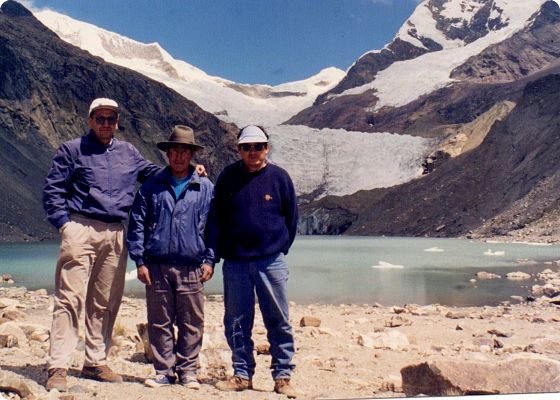
In addition to his work in Peru, César Portocarrero has been active in international scientific exchange programs, many of which have been supported by the US Agency for Internation Development (USAID), United Nations Development Program (UNDP), International Center for Integrated Mountain Development (ICIMOD), and The Mountain Institute (TMI). Dr. Alton Byers has collaborated intensively with Portocarrero, both in his capacity as Director of Science and Exploration at The Mountain Institute and more recently as Co-Manager of the High Mountains Adaptation Partnership (HiMAP) at the Institute for Arctic and Alpine Research (INSTAAR) of the University of Colorado, Boulder. In nominating Portocarrero for the SEHML Medal, Byers stated that,
I first met him around 2007 when I was developing a greater interest in glacial lakes and when he was head of the Glaciological Unit in Huaraz. I remember being mystified over how the Peruvian expertise in reducing the risk of potentially dangerous lakes (they had lowered 35 between the 1960s and 1990s) still wasn't on the radar screens of countries now facing similar challenges, such as Nepal and Bhutan. So in 2011 I took César and two other employees of the Glaciological Unit on the Andean-Asian Glacial Lake Expedition to Nepal; subsequently, AECOM ran a subcontract through TMI to bring César over to Nepal for a series of evaluations of the UNDP Imja risk reduction project. César then played a key role in the Peru HiMAP project's work with local communities and the government to develop local adaptation plans of action that included an early warning system for Lake Palcacocha, and then participated in our July 2013 workshop in Huaraz.
One result of this collaboration is the Glacial Lake Handbook: Reducing risk from dangerous glacial lakes in the Cordillera Blanca, Peru, authored by César Portocarrero Rodríguez; this technical treatise is specifically designed to share expertise with other mountainous nations. The report was funded by US AID, and published by Engility Corporation and HiMAP.
Dr. Byers is the recipient of the 2006 Sir Edmund Hillary Mountain Legacy Medal.
Colleagues Respond
Reaction to the selection of Ing. César Portocarrero to receive the Sir Edmund Hillary Mountain Legacy Medal has been enthusiastic. If you wish to add a message of congratulations, please email the SEHMLM Project Director at sicroff@hillarymedal.org.
Dr. David Molden, Director General of the International Centre for Integrated Mountain Development (ICIMOD), emphasized the leadership of Ing. César Portocarrero in long-term disaster management:
As the Hindu Kush Himalayas faces increasing prospects of GLOFs, we will look more and more to the work of César for ideas and inspiration.
Prof. Dr. Wilfried Haeberli, professor of glaciology, geomorphodynamics, and geochronology in the Dept. of Geography at the University of Zurich, submitted the following comment:
I have known César Portocarrero for many years, as a contact, friend, and active collaborator on climate and glacier change, hazards, lakes, freshwater resources and hydropower in icy high-altitude mountains. His background as a civil engineer and his positive and creative personality have enabled César to identify and realize practical solutions concerning the safety of dangerous lakes in the Cordilleras of Peru. This remarkable achievement has involved hard physical work at very high altitudes and sometimes in delicate socio-political circumstances. A key to the success of his engagement has been his warm and kind relations with the indigenous people and his deep understanding of their culture and livelihood. In the field with César I have always had the impression that the campesinos considered him to be their personal friend. His book Reducing the risk of dangerous lakes in the Peruvian Andes: A handbook for glacial lake management, recently published by the US Agency for International Development, is a scientific landmark on practical risk-reduction work and a unique document about the admirable successes that have been achieved in the highly technical work of mitigating the hazards of dangerous glacial lakes in Peru. Herzliche Glückwünsche, César!
Dr. Daene McKinney (Civil Engineering, University of Texas at Austin), currently involved in the volume-reduction effort at Imja Lake in Nepal, writes that "César Portocarrero is an engineer who has worked tirelessly for many decades to ensure the safety of mountain communities from the risk of glacial lake outburst floods. This work has helped to ensure the well being of both large communities like Huaraz in Peru as well as small villages like Dingboche in Nepal."
Dr. Ray Bradley, Director of the Climate System Research Center at the University of Massachusetts, notes that "César Portocarrero has been relentless in his efforts to raise awareness about the important consequences of climate change in the Andes. His research on the glaciers of the Peruvian Andes has documented the very significant changes taking place in those wonderfully quiet, but poorly observed parts of our world. The 2017 Sir Edmund Hillary Mountain Legacy Medal is a well-deserved recognition of César's efforts."
Dr. Jack D. Ives, Adjunct Professor at Carleton University, Ottawa, and recipient of the first Lifetime Achievement edition of the SEHML Medal comments that
César Portocarrero's work embodies a thorough implementation of Chapter 13 of the Rio Summit's Agenda 21, and in particular Objective C: To improve and build the existing land/water ecological knowledge base regarding technologies and agricultural and conservation practices in the mountain regions of the world, with the participation of local communities. When, as an undergraduate at Nottingham University, I first embarked on glaciological research in Iceland, I was amazed to realize how keenly the local farmers had studied the periodic jökulhlaup (glacier leap), which we rather inelegantly refer to as a Glacial Lake Outburst Flood. I am not at all surprised that a native speaker of Quechua (or runa simi, the "people's language") is leading efforts to build resilience in at-risk communities in the face of some of the more devastating effects of climate change. I particularly applaud César's efforts to develop outbreak flood solutions that simultaneously address less dramatic hazards, including diminished water resources. His steady collaboration with mountain communities illustrates his commitment to "getting the facts right" before embarking on projects of sustainable development. Well done!"
Dr. Ives is author of numerous key works on montology, including Himalayan Perceptions: Environmental Change and the Well-Being of Mountain Peoples (2004), Sustainable Mountain Development: Getting the Facts Right (2014) and most recently, Baffin Island: Field Research and High Arctic Adventure, 1961-67 (2016).
Prof. John Reynolds of Reynolds International, a world leader in geohazards assessment and mitigation, writes that "It is entirely fitting that Cesar should be so honoured as he has contributed a huge amount to the safety of mountain communities in Peru over many, many years. It has been a privilege to have worked with him and to have shared in his passion for the mountains and those who live and work in their midst."
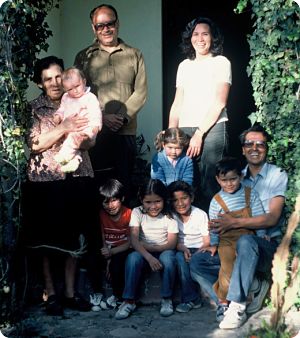
Cesar (left), Lonnie (right), Cesar's parents (rear)
Dr. Lonnie Thompson, Distinguished University Professor at Ohio State University's School of Earth Sciences and research scientist at Byrd Polar Research Center, writes:
I am honored to provide a short comment about Ing. César Portocarrero upon his selection to receive the 2017 Sir Edmund Hillary Mountain Legacy Medal. I have had the pleasure of working with Ing. César Portocarrero for over four decades. First, we worked together in the 1980s on the Quelccaya ice cap in the southern Andes of Peru, and later we continued our work together on the ice core drilling project on Huascarán in northern Peru. César was an avid tennis player in his younger years, but tennis balls were hard to come by in Huaraz back then; he had also developed a taste for buckwheat pancakes while participating in the Juneau icefield research program in Alaska, and thus I always took a few boxes of buckwheat pancake mix and a few cans of tennis balls anytime I traveled to Peru. We have conducted research on climate change and water resources through changing governments and the rise and fall of the Shining Path (Sendero Luminoso). Our families grew up together with my daughter and his exchanging letters and I attended the wedding of one of his daughters. César has been keenly interested in climate change, particularly its impacts on water supplies and glacial lake security, throughout his time working with Electro Peru and subsequently with various NGOs. He selflessly translated our first work entitled Tropical Ice Core Paleoclimatic Records: Quelccaya Ice Cap, Peru A.D. 470 to 1984, such that the results were published in Spanish along with an electronic version of the annual data sets so that information would be available throughout the Spanish speaking world. I can think of no one more deserving of the 2017 Sir Edmund Hillary Mountain Legacy Medal than my friend and colleague Ing. César A. Portocarrero Rodríguez.
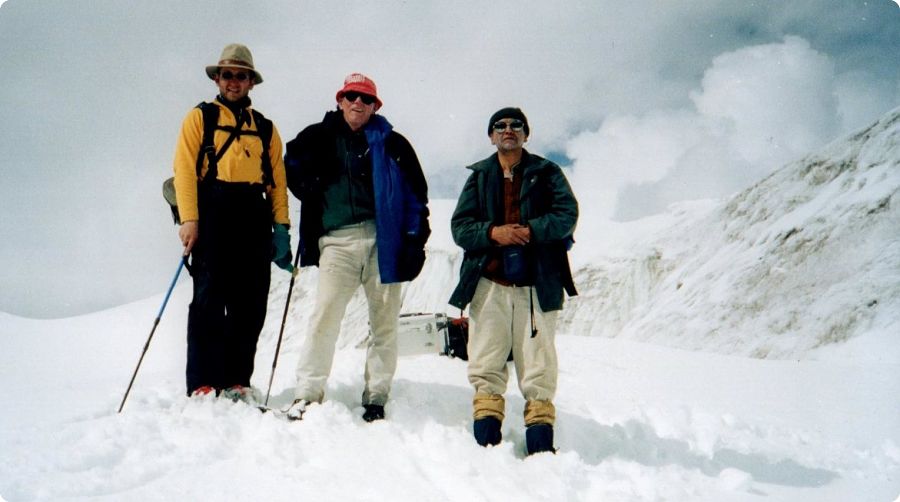
Above: César Portocarrero (right) with longtime friend Dr. Lonnie Thompson (center) on the Quelccaya Ice cap in the south of Peru, helping to recover ice cores for paleoclimate research.
